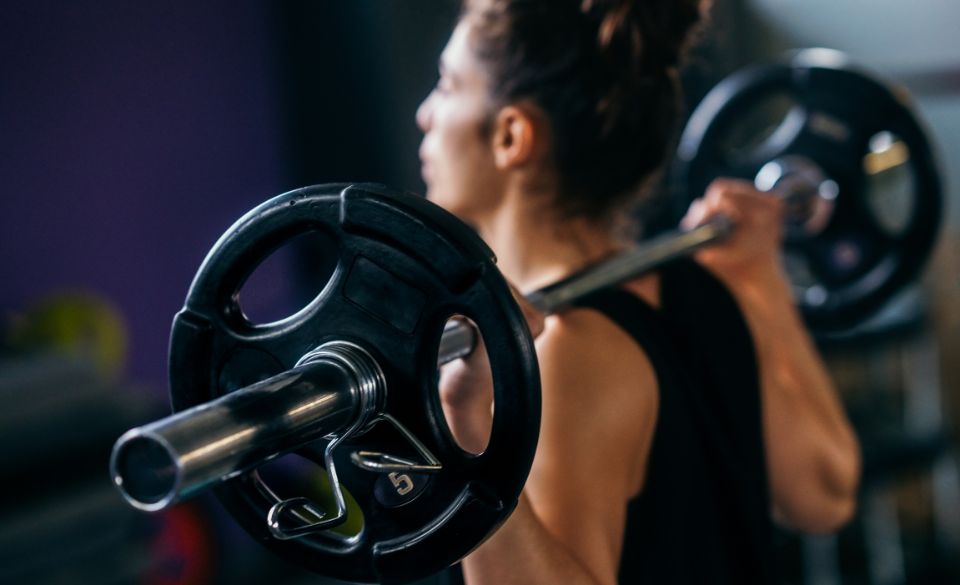
Is It Okay to Lift Weights Barefoot? Exploring the Pros and Cons
Page Contents
Weightlifting is a popular form of exercise that requires proper form, stability, and support. One question that often arises is whether it is acceptable to lift weights barefoot. Some individuals argue that barefoot lifting provides benefits such as increased stability and improved proprioception, while others express concerns about safety and hygiene. Let’s delve into the topic and examine the pros and cons of lifting weights without shoes.
Pros of Lifting Weights Barefooted
Enhanced Stability and Balance: Lifting weights barefooted can provide a more direct connection with the ground, offering improved stability and balance. The absence of cushioning and elevation from shoes allows for better proprioceptive feedback, enabling you to maintain better control over your movements during exercises.
Increased Grip and Traction: Bare feet have better natural grip and traction on the gym floor compared to shoes, especially if the floor is clean and well-maintained. This can be beneficial for exercises that require a firm grip or when performing compound movements that involve pushing or pulling.
Improved Proprioception and Technique: Barefoot lifting can enhance proprioception, which refers to the body’s awareness of its position and movement. With direct contact between the feet and the ground, you may have a better sense of body positioning, allowing for improved form and technique. This heightened awareness can reduce the risk of injury and help optimize lifting mechanics.
Cons of Lifting Weights Barefooted
Increased Risk of Foot and Toe Injuries: Lifting weights without footwear exposes your feet to potential injuries. Dropping weights or accidental impact can cause harm to the toes, and heavy loads can strain the feet and ankles. The absence of shoes removes the protective barrier that helps absorb and distribute the impact of weightlifting exercises.
Lack of Arch Support and Cushioning: Traditional athletic shoes provide arch support and cushioning, which can be beneficial for individuals with low or high arches or those who require additional comfort during workouts. Barefoot lifting offers no such support, potentially leading to discomfort or increased stress on the feet, especially during exercises with repetitive impact.
Hygiene and Safety Concerns: Gyms and fitness facilities can harbor bacteria, fungi, and other pathogens on the floor and equipment. Going barefoot exposes your feet to direct contact with these microorganisms, increasing the risk of infections or skin irritations. Additionally, shoes provide protection against potential hazards on the gym floor, such as dropped weights, sharp objects, or spilled liquids.
Do Gyms Let You Lift Weights Barefooted
While some individuals prefer the freedom and benefits of barefoot lifting, it is essential to understand the guidelines set by gyms regarding footwear. Let’s explore the factors that influence whether gyms allow you to lift weights barefooted and the considerations that come into play.
Gym Policies and Rules:
Gyms typically have established policies and rules to ensure the safety and well-being of their members. These policies often include guidelines on proper attire, including footwear. It is crucial to check the specific policies of your gym regarding footwear requirements before lifting weights barefooted.
Hygiene and Cleanliness:
One of the primary concerns for gyms is maintaining hygiene and cleanliness within the facility. Barefoot lifting raises concerns about potential foot contact with equipment, mats, and gym floors, which can increase the risk of transferring bacteria, fungi, or other pathogens. Gyms may have strict policies requiring appropriate footwear to protect the members and maintain a clean and safe environment.
Liability and Safety:
Gyms have a responsibility to ensure the safety of their members. Lifting weights without footwear exposes individuals to potential injuries such as dropped weights or accidental impact on the feet. Gyms may have footwear policies in place to reduce liability and minimize the risk of foot-related injuries. By requiring appropriate footwear, they aim to provide a safer training environment for everyone.
Alternative Options:
If lifting weights barefooted is not allowed at your gym, there are alternative options to consider. Many gyms require closed-toe athletic shoes that provide support and stability during weightlifting exercises. Investing in a good pair of athletic shoes designed for weightlifting or cross-training can provide the necessary support while still allowing for proper foot movement and stability.
Communicating with Gym Staff:
If you have a strong preference for lifting weights barefooted, it may be worthwhile to communicate with the staff or management of your gym. In some cases, exceptions can be made if you can provide a valid reason and assure them of your responsible behavior and adherence to hygiene protocols. However, it is important to respect their decision and policies, as they prioritize the overall well-being of their members.
Whether gyms allow you to lift weights barefooted depends on their specific policies, cleanliness considerations, liability concerns, and commitment to member safety. It is important to familiarize yourself with your gym’s rules and policies regarding footwear before attempting to lift weights barefooted. If lifting without shoes is not permitted, consider investing in appropriate athletic footwear designed for weightlifting or cross-training.
Final Words
In conclusion, the decision to lift weights barefoot is a personal one that should take into account individual preferences, goals, and safety considerations. Barefoot lifting may offer benefits such as enhanced stability, improved proprioception, and a more natural connection with the ground. However, it also presents potential risks in terms of injury, hygiene, and safety.
If you choose to lift weights barefoot, it is important to exercise caution, start with lighter loads, and be mindful of your surroundings. Alternatively, minimalist shoes can provide a compromise between the benefits of barefoot lifting and the protection and support offered by footwear.
Ultimately, the most important factor is to prioritize safety and comfort during your weightlifting sessions. Listening to your body, maintaining proper form, and using appropriate equipment are key elements for a successful and injury-free lifting experience.



